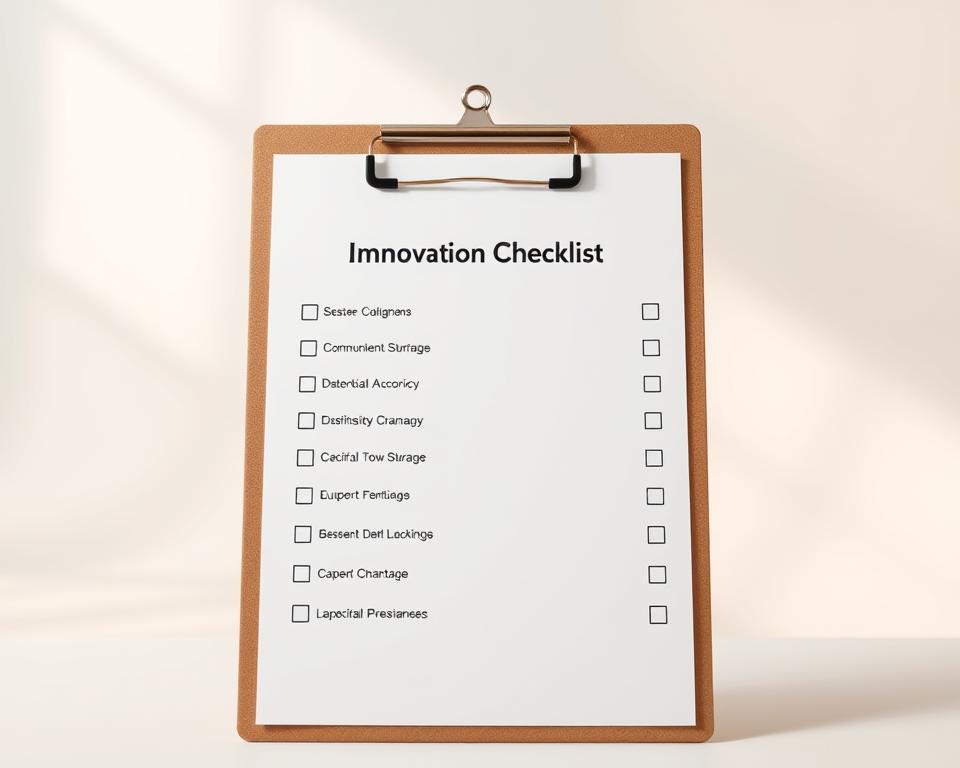Anúncios
Can a simple, repeatable process turn bold ideas into real products that deliver measurable value?
You’re about to set the stage for a 2025-ready guide that shows how to build a repeatable process anchored in real user needs and clear market context.
This introduction frames design thinking as a strategic, user-centered path. It highlights practical examples from security and safety, like sensors and AI that help predict wildfires and support aging care without overpromising results.
What you’ll gain: a short roadmap of steps, ways to keep users involved, and tactics that link design, marketing, and sustainability for the U.S. market.
Read on with a critical eye and apply each idea consciously. When you need it, consult qualified professionals for technical, legal, or financial advice.
Anúncios
Introduction: why learning how to Innovation matters in 2025
how to Innovation sits at the intersection of user needs, AI-powered data, and new governance rules in 2025. Customer expectations now demand faster, safer, and greener solutions. At the same time, AI acceleration and sustainability imperatives raise new ethical and compliance questions.
A user-centered, iterative approach keeps you grounded. Teams that empathize, define real user problems, ideate widely, prototype quickly, and test in real contexts learn faster and waste less. Security pilots show sensors and AI can help predict wildfires and improve aging care when teams test assumptions with real users.
What you will learn: a step-by-step method, practical tools, case-style examples, and metrics that guide decisions responsibly. This guide contrasts trend-driven fixes with grounded practices that respect privacy and ethics.
Anúncios
Use the checklist and decision frameworks here to balance speed and quality, set realistic time expectations, and keep communication aligned. For a deeper perspective on why this matters for business strategy, see why innovation matters.
- You’ll place 2025’s surge in innovation into practical context.
- You’ll anchor work around users and measurable evidence.
- You’ll adopt a repeatable process that accepts uncertainty and values iteration.
How to Innovation: step-by-step
Use a compact checklist that guides each stage from field notes to product decisions.
Empathize
Run brief field observations, short expert interviews, and artifact reviews. Write assumptions, then design questions that surface behavior rather than opinions.
Define
Cluster insights and craft a clear user problem statement. Frame the challenge around the user’s needs, not company goals.
Ideate
Use brainwriting, “How might we” prompts, and a best-practice scan of related tools and products. Generate many ideas, then converge with dot voting and decision criteria.
Prototype
Build a lightweight prototype—sketches, click-throughs, or a service blueprint—that makes the value proposition tangible. Choose fidelity that fits your learning goal.
Test
Plan testing with clear objectives, success signals, and a short script for comparable sessions. Sample realistic users, capture observations, then decide what to iterate, drop, or scale.
- Prepare questions for interviews and observations.
- Document assumptions and evidence after each session.
- Close the loop with focused steps based on what you learn.
From idea to impact: building your innovation team and governance
Start by forming a small, accountable group that can move ideas toward real-world use quickly.
Lean structure: assign a product lead, a user research lead, designers and engineers, plus an operations or finance partner. This clears decision rights and keeps scope aligned with business constraints.
Roles and rituals
Keep ceremonies short. Weekly standups, focused decision reviews, and evidence checkpoints keep the process visible.
Use a simple cadence that highlights blockers early and surfaces user findings for the whole team.
Governance and ethics
Guardrails matter: consent, privacy-by-design, bias checks, and legal reviews reduce risk and strengthen trust with the customer.
Apply a lightweight risk-and-impact rubric to prioritize efforts and explain trade-offs to the company.
- Document decisions so anyone can audit who chose what and why.
- Close governance loops with quick approvals that preserve momentum.
- Lean on experience from safety and care pilots when sensors or data are involved.
Prototyping and testing that work in the real world
Make the concept tangible early so your team can gather real-world evidence. Prototyping turns a concept into something you can test. That reduces guesswork and speeds learning.
Low- to high-fidelity approaches and when to use each
Choose fidelity based on risk and the stage of learning. Start with sketches and paper flows when you need fast insight.
- Sketches / wireframes: early concept checks and team alignment.
- Wizard-of-Oz / concierge: simulate service paths without full build.
- Interactive prototypes: test flows and usability before engineering.
- Hardware mockups: validate physical ergonomics and integration.
Recruiting users, objectives, and collecting actionable feedback
Recruit ethically. Offer clear consent, realistic scenarios, and fair compensation. Sample users who match the target profile, and include edge cases.
Set 1–3 objectives per session. Use tasks that mimic real contexts and capture observable behavior.
Collect feedback with structured notes, short surveys, and video when allowed. Synthesize after each session and update your backlog as a single quick step.
Metrics that matter: adoption signals, usability, and evidence strength
Measure task success, time on task, and key friction points. Track adoption signals like repeat use, intent to pay, and referral interest.
Evidence confidence grows as uncertainty drops across stages. Use comparable templates across sessions so results are reliable and actionable.
- Outcome: choose fidelity so you learn fast without overinvesting.
- Process: recruit ethically, run structured observations, then iterate.
- Next step: when confidence rises, escalate fidelity and focus on the value proposition.
For a practical playbook on iterating prototypes and running realistic trials, read this prototyping and testing guide.
Tools and technologies that accelerate the innovation process
Use simple artifacts and shared tech to keep new ideas visible, testable, and ethically grounded.
Design thinking toolset
Practical tools: interview guides that shape questions, journey maps that reveal problems, and assumption logs that record risk. Dot-voting and prioritization matrices keep debates short and decisions clear.
Enabling technologies for rapid pilots
Pair sensors, AI, and streaming data with low-fidelity pilots. For example, wildfire prediction and aging-care trials use sensor feeds plus simple analytics to validate signals before major builds.
- Keep tools lightweight: pick the smallest item that answers the question.
- Embed users: co-create journey maps and review drafts with participants.
- Track status: dashboards or logs show pilot health, open issues, and key assumptions.
Align choices with company systems, privacy rules, and security checks. Choose an ethical approach that pairs human oversight with technical controls so the product moves forward with evidence and trust.
Scaling innovation: portfolios, storytelling, and cross-functional buy-in
Scaling smartly means you frame efforts so leaders can choose where to invest next. Use a portfolio view that separates core, adjacent, and transformational bets. That clarity helps you apply evidence gates and set funding rules for each stage.

Portfolio view: balancing bets across stages and risk levels
Map efforts into three lanes: core fixes that sustain the product, adjacent moves that extend value, and transformational experiments that test new ideas.
Assign simple gates: user signal thresholds, operational readiness, and legal clearance. Meet a gate, then shift resources forward. Miss a gate, stop or pivot.
Tell your story: evidence, narrative, and stakeholder resonance
Numbers open doors; stories make them stay. Lead with a concise metric — task success, retention signal, or pilot adoption — then pair it with a short user vignette that explains why the result matters.
Prepare a one-page brief that answers likely questions from finance, legal, and operations. Include status, risks, next steps, and the exact support you need.
- Frame trade-offs: surface constraints and present options so leaders can pick priorities.
- Anticipate questions: make assumptions and evidence explicit for faster approvals.
- Align with strategy: link each effort to business priorities and potential growth paths without overclaiming results.
Conclusion
Close this guide with a clear plan for the innovation process: start small, define a user-centered problem, and test a lightweight prototype to learn real value.
Progress takes time and steady evidence, not opinion. Iterate, measure outcomes, and tell the story so leaders see status and can act. Share lessons transparently along the way and engage others in meaningful ways.
Respect ethics, privacy, and sustainability as you run pilots that affect people and the customer experience. Capture what you learn and keep new ideas practical.
If legal, financial, or sustainability questions arise, consult qualified professionals so your company is ready and decisions are sound.



